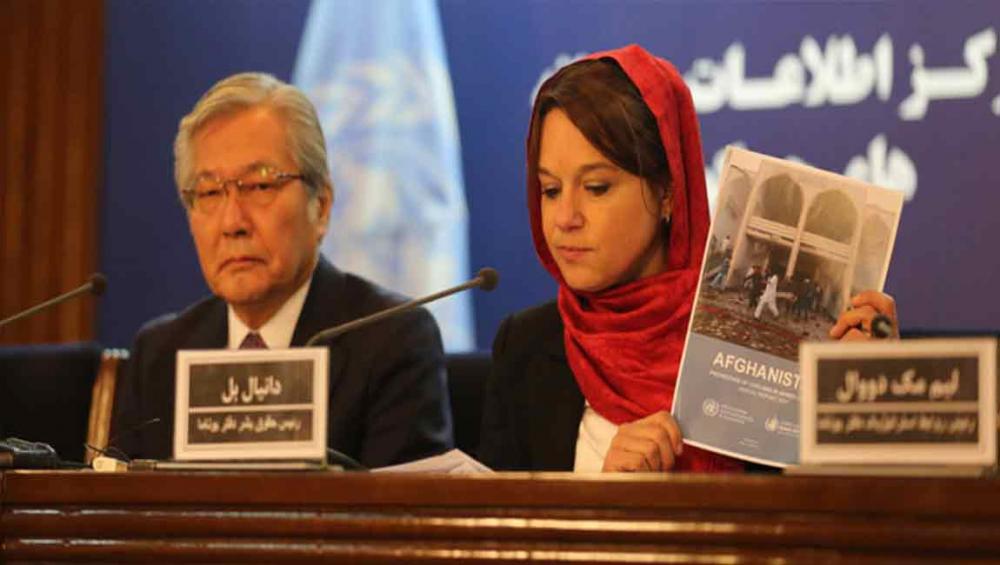Just Earth News | @JustEarthNews | 16 Feb 2018, 05:00 am Print

Rafi Alkozai/UNAMA
New York, Feb 16 (JEN): More than 10,000 civilians were killed or wounded in the Afghanistan conflict during 2017, a nine per cent drop over 2016, according to a United Nations report out Thursday which also revealed rising casualties caused by suicide bombings and attacks using improvised explosive devices (IEDs).
“The chilling statistics in this report provide credible data about the war’s impact, but the figures alone cannot capture the appalling human suffering inflicted on ordinary people, especially women and children,” said Tadamichi Yamamoto, the Secretary-General’s Special Representative for Afghanistan.
A total of 10,453 civilian casualties – 3,438 people killed and 7,015 injured – were documented in the 2017 Annual Reportreleased Thursday by the UN Assistance Mission in Afghanistan (UNAMA) and the Office of the UN High Commissioner for Human Rights (OHCHR).
Although this figure represents a decrease of nine per cent compared with 2016, the report highlights the high number of casualties caused by suicide bombings and other attacks using IEDs.
“I am particularly appalled by the continued indiscriminate and unlawful use of IEDs such as suicide bombs and pressure-plate devices in civilian populated areas. This is shameful,” said Mr. Yamamoto, who also heads UNAMA.
The second leading cause of civilian casualties in 2017 was ground engagements between anti-government elements and pro-government forces, although there was a decrease of 19 per cent from the record levels seen in 2016.
The report attributes close to two-thirds or 65 per cent of all casualties to anti-government elements: 42 per cent to the Taliban, 10 per cent to Da’esh/Islamic State Khorasan Province (ISIL-KP), and 13 per cent to undetermined and other anti-government elements.
Pro-Government forces caused a fifth of civilian casualties: 16 per cent were attributed to the Afghan national security forces, two per cent to international military forces, one per cent each to pro-Government armed groups and undetermined pro-Government forces.
Unattributed cross-fire during ground engagements between anti-government elements and pro-government forces caused 11 per cent of civilian casualties.
Women and children remained heavily affected by conflict-related violence. UNAMA documented that 359 women were killed, up five per cent, and 865 injured in 2017. Child casualties – 861 killed and 2,318 injured – decreased by 10 per cent compared with 2016.
“Afghan civilians have been killed going about their daily lives – travelling on a bus, praying in a mosque, simply walking past a building that was targeted,” said UN High Commissioner for Human Rights Zeid Ra’ad Al Hussein.
“Such attacks are prohibited under international humanitarian law and are likely, in most cases, to constitute war crimes. The perpetrators must be identified and held accountable,” he added.
The report attributes 1,000 civilian casualties – 399 deaths and 601 injured – and the abduction of 119 civilians to Da’esh/ISIL-KP.
“The group mainly targeted civilians in 2017 but also conducted indiscriminate and disproportionate attacks against security forces in civilian areas,” the report states.
Among its recommendations, the report urges parties to the conflict to take all feasible precautions to protect civilians and civilian installations. It calls on anti-government elements to cease the deliberate targeting of civilians and civilian objects and the indiscriminate and disproportionate use of all IEDs.
- Inside May conflict: Pakistani President Zardari was ordered to hide in bunker during Operation Sindoor
- Bomb factory inside a Bangladeshi madrasa? Explosion near Dhaka injures children, explosives recovered
- World fails again: Landmine casualties hit record levels as treaties stall
- Explosions, gunfire, panic: Inside the suicide attack on paramilitary forces headquarters in Peshawar that left three security officials dead
- Nigeria in shock: 215 students abducted after bandits invade Catholic school



-1763561110.jpg)


